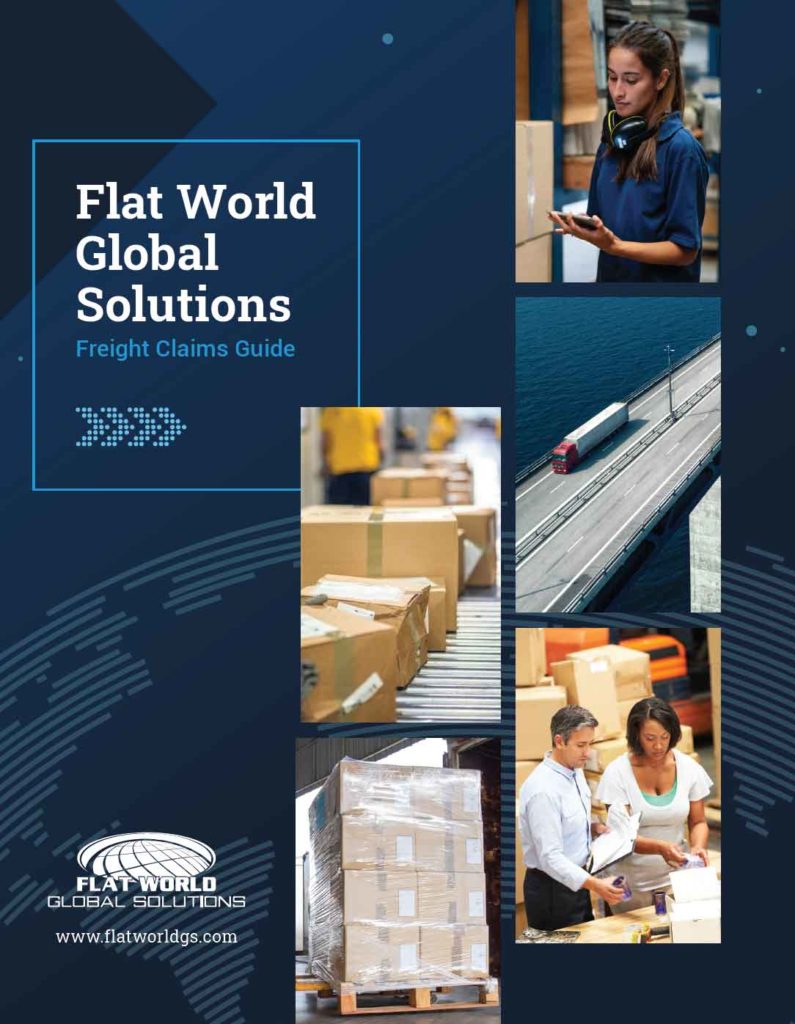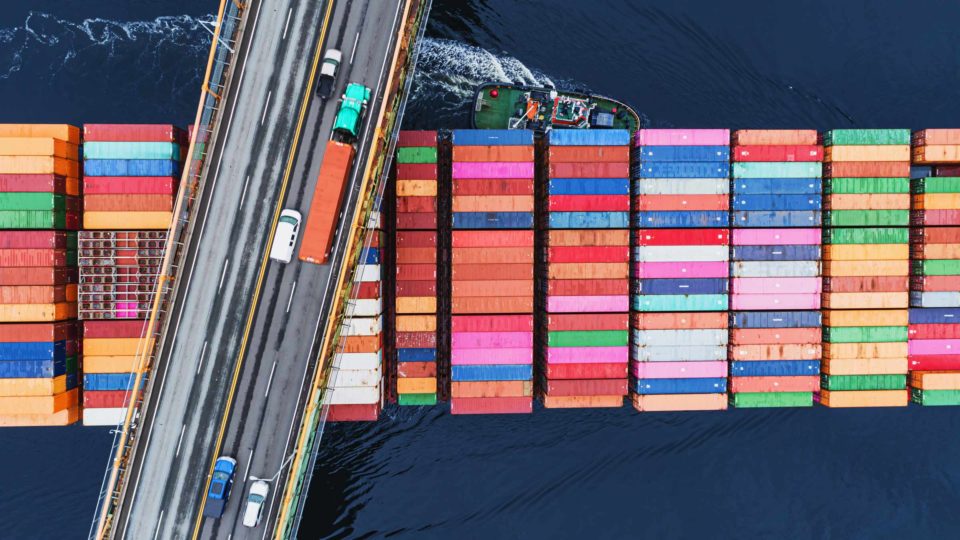Posted On August 11, 2021

An Introduction to Freight Claims
Every shipper dreads it.
But with over 92% of shippers experiencing some kind of loss,* damage or missing item freight claims are inevitable. You’ve likely heard horror stories of months-long negotiations for reduced payouts, or worse, an outright freight claim denial.
Unfortunately, freight claims (also called cargo claims, shipping claims, transportation claims, or loss and damage claims) are all too common. A freight claim is a legal demand by a shipper against a carrier for financial reimbursement due to shipment damage, loss or other circumstances.
But preparation and knowledge of the freight claims process can be a major factor in whether a freight claim is paid. Taking the time to familiarize yourself with how the freight claims process will play out can go a long way in avoiding lengthy negotiations and claim battles.
*According to 2018 UPS Capital Report
When, Why and How to File A Freight Claim
Before we dive into the freight claims process itself, let’s take a look at the four main types of freight claims and the circumstances that warrant their filing. Understanding the different types of freight claims and which one applies to your situation is important in achieving a successful outcome.
Damage Claim
This is by far the most common cause of freight claims. This is when your shipment has visible damage upon receipt.
Concealed Damage Claim
Sometimes damaged or missing goods are discovered after the shipment has been received. With damage that is obscured until after it’s been delivered, this type of freight claim is different from damage claims.
Loss Claim
As the name suggests, a loss claim is when a shipment gets lost in transit and never makes it to the final destination.
Shortage Claim
When a shipment arrives but is missing cargo, this is known as a shortage claim.

Shippers’ and Recipients’ Responsibilities in Freight Claims
All three parties involved—the shipper, recipient (or consignee) and carrier—need to work together to safely execute shipments and hold each other responsible for their role in transporting and receiving products in good condition. Because transportation claims are a legal process that can be costly for all parties, it’s important that both shippers and recipients understand their respective responsibilities.
To prevent loss and damage during transportation, the shipper is responsible for proper packaging, proper labels and markings on the packaging, and proper descriptions on the shipping papers.
The recipient is responsible for carefully identifying and documenting loss and/or damage on the carrier’s delivery receipt at the time of delivery, and while the driver is present.
Claiming the damage or loss and expecting to be fully reimbursed isn’t enough – claimants have a legal obligation to mitigate claims and reduce the damages as much as possible. This can be accomplished several ways, including:
- Repairing goods and submitting claims to reflect the cost of parts and labor
- Sorting damaged and undamaged items to reduce the quantity being claimed
- Selling the damaged goods through the most profitable means available (The claim would then reflect the difference between the destination value and the amount recovered through the secondary sale)
- Retaining damaged but useable goods for an allowance
Proper Packaging and National Motor Freight Traffic Association
Packaging is essential in any supply chain. The NMFTA, or National Motor Freight Traffic Association, dictates packaging requirements associated with all commodities being shipped. These internationally recognized specifications and requirements outline the proper packaging of goods. Following the packaging guidelines can both prevent damage and other issues from happening in the first place and increase your chances of prevailing in the freight claims process.
Inspecting Freight Upon Delivery
Immediate inspection of all deliveries is vital in the claims process—the earlier you notice damaged or missing goods, the better. Whether it’s damaged goods, shortages or another type of loss, good notation and inventory will increase the chances of getting the maximum payout.
Inspect freight as soon as it’s delivered, before signing the delivery receipt. This doesn’t require you to break down or unpack the shipment while the driver is present, but a good inspection and walk around the freight is recommended.
Document any missing or damaged cargo on the delivery receipt, including the item type, amount of missing/damaged goods and any other info. Taking photos of the freight is also helpful. Use specific details and try to avoid general terms such as “box damage” or “torn.” This type of notation does not provide adequate support for your claim. A notation of “subject to inspection,” by itself, is not considered a valid notation of loss or damage. Example of Proper Notation: “1 carton Ink Cartridge #CN-1456 crushed and cartridge cracked.”
Don’t dispose of the freight or its packaging until the claim process is over. A representative from the carrier might need to inspect the shipment. Failing to retain the damaged freight will result in the claim being denied.
Pay the freight charges. While this might seem counterintuitive, delaying payment can also delay the claims process. Paying the freight charges on-time will also result in a more timely resolution.
Shortages
Keep a tally record when receiving a large number of items or the shipment consists of a number of different items. Make sure to check the labels on all handling units to check for shortages as goods are being unloaded.
Keep the shipment together until unloading is complete, in case a recount is necessary. Just like damages, note shortages on the delivery receipt before signing. The carrier is responsible for Handling Units, not piece count. If a pallet looks like it’s been rewrapped or tampered with, noting that the shrink wrap isn’t intact will help prove carrier liability.
Timing
If the issue was noted at the time of delivery, claimants have nine months from date of delivery to file claims for loss and/or damage (see below for issues noted after delivery). If any part of a shipment is refused because of damage, the nine months begins when the shipment was originally scheduled for delivery. A claim isn’t considered as filed until it is received by the carrier.
When Damage Isn’t Noticed Until After Delivery
Documenting exceptions while the driver is present ensures all parties acknowledge the same information, helping to reduce potential delays in the claims process.
But sometimes, damage isn’t discovered until after delivery, often due to packaging obscuring the damaged or missing goods. It’s not ideal, but there’s still some time. These claims are considered and investigated as concealed loss or concealed damage claims and should be reported to the carrier within five days of delivery.
Unfortunately, the burden of proof is on the claimant to show carrier negligence caused the damage. As with all damage claims, the recipient should retain the freight until the claim is resolved.
Whether you notice damage or missing goods during or after delivery, proper documentation and timely reporting are essential.
The Legality of Freight Claims
Understanding the Carmack Amendment is essential to successful freight claims.
The law outlines the rights, responsibilities and liabilities of motor carriers in the event of a freight claim. Essentially, the carrier has liability for the damage, as long as the claimant can prove three elements:
- The goods were sufficiently packaged and in good condition before delivery
- The goods were delivered damaged or missing
- The specific amount of damages
However, there are five exceptions for carriers under the Carmack Amendment:
- An Act of God or an unanticipated event like a natural disaster or medical emergency. In some instances, carriers are expected to take preventative measures for these situations.
- Public Enemy or Act of War occurs when damage is caused by enemy military forces, typically in a warzone.
- Act or Default of Shipper is an exception when the carrier can prove the damage or loss was caused by the shipper’s negligence or mistakes in packaging, loading, mislabeling or other faults.
- Public Authority occurs when government actions, including tariffs, recalls and road closures, negatively impacts cargo.
- The Inherent Vice or Nature of the Goods comes into play for goods that can decay, easily become defective or carry disease, such as food and biological items. These situations can be tricky, though. If a carrier’s actions lead to accelerated decay or other damage, the carrier can be liable.
As always, check with Flat World if you think your loss might be excluded under the Carmack Amendment.
International Cargo Claims
International shipments come with their own set of additional considerations for freight claims, and rules vary based on mode.
Ocean cargo claims and the Carriage of Goods by Sea Act
COGSA, or the Carriage of Goods by Sea Act, governs the shipments of goods crossing international waters. Carriers are entitled to seventeen different statutory defenses for cargo that is lost or destroyed while under the carrier’s custody. In cases where none of those defenses apply, ocean carrier liability is only $500 per shipping unit. For most goods, a shipping container’s contents are worth far more than $500, so it’s usually a good idea to purchase additional cargo insurance for ocean cargo shipments.
Under COGSA, the shipper or consignee must file cargo claims for ocean shipments within three days—a fraction of the time allotted under Carmack. So like other deliveries, make sure to inspect goods as soon as they arrive.
Air cargo claims
The Montreal Convention governs international shipments transported by air (it also establishes how much an airline is responsible for when a passenger’s luggage goes missing). Under the Convention, claims must be filed within 14 days of delivery for damaged shipments or 21 days for delayed shipments.
International air carriers have liability for only $12.29 per pound of goods being shipped (as of January 2022) unless otherwise declared. For products worth more than that, insurance is recommended.

Filing a Freight Claim
Documentation is key in filing a claim.
Keep this checklist handy when filing freight claims:
- Proof of delivery
- The original BOL, or bill of lading
- Explanation of loss or damage
- Dollar amount being claimed
- A copy of the original vendor invoice showing
- the value of the goods being transported
- Photos of the goods and packaging,
- if damaged
- Replacement invoice or repair bill
- Paid freight charges
After Filing a Freight Claim
After submitting a freight claim, carriers have up to 30 days to acknowledge the claim by assigning a claim number and adjuster.
Here’s what to expect after you file a claim:
Carrier Investigation
The carrier will review the claim, including all damages and losses. The carrier might request additional information during this phase, which is one reason why keeping the freight until the claim has been settled is important.
Carrier Decision
Generally, carriers have 120 days to make a decision. However, your individual freight claim may vary based on the situation. While a claims partner or third party logistics company can’t force a carrier’s hand, they can certainly help speed the process along and keep you informed throughout the claims process.
Payment or Appeal
Depending on the outcome, you may file an appeal to a denial, settle for a portion of your loss or recover the full loss.
If an appeal is needed, supporting documentation will be required to consider a change in the claim.
A lawsuit can also be filed against the carrier but needs to be done as soon as possible after the date the claim is disavowed. Consult with your claims partner on the best option if your claim is denied.
Unfortunately, disagreeing with the claim denial isn’t enough. You can work with a Flat World Claims Specialist to provide a detailed description of how your shipment was sufficiently packaged and how the shipper and recipient (consignee) were not responsible for the damage or shortage when filing a dispute or appeal.
Preventing Freight Issues
Optimizing your packaging is one of the most important things you can do to avoid freight damage, loss and claims.
Of course, the nature of a shipment’s packaging will depend on the goods being transported.
Spending a bit more to ensure the packaging is protective and effective can prevent extra unnecessary costs later on. Consider the following when packaging your cargo:
Density
Use smaller boxes or fill in empty space with padding or other products.
Labels
Indicate whether the package is fragile, needs to be right side up, can only bear a certain weight, or has other restrictions. Be sure to remove old labels and place labels where they’ll be seen and not easily damaged in transit.
Climate
Heat, cold, humidity and condensation can all damage shipments. Make sure your packaging accounts for the weather of its origin, destination and everywhere in between.
Pallet
Just like the individual items on it, a pallet should be as dense and protected as possible.
Data
Use the data from your transportation management system, or TMS, to determine which products, carriers or lanes result in the most damage to improve operations.
Investing in Freight Insurance
Transportation carriers include some liability in the cost of shipping, meaning that if items are damaged, the carrier will reimburse up to a certain amount.
The amount of coverage depends on the commodity class of what’s being shipped. The amount of liability a carrier will offer for a shipment is important to consider when deciding whether to purchase freight insurance.
For example, if a carrier’s liability is $10,000, but the goods shipped are worth $90,000, additional insurance is a good idea, because the company could potentially lose $80,000 worth of product.
You can also purchase insurance through Flat World’s third-party partner, which usually costs a fraction of the price when purchasing through the carrier.
With freight insurance, shippers don’t need to worry about burden of proof, and sometimes, knowing that a company won’t need to go through the claims process is worth the added cost. Shipping claims are also often processed faster through the insurance process.
For help filing a claim, contact Flat World’s claims department at claims@flatworldgs.com.
If you have questions about improving your supply chain or need help with your company’s freight claims management, contact us today.
Prefer a PDF format? Download the guide here to save and access it any time!

